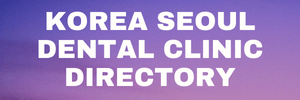Teeth Whitening in Jongno
Why Choose Seoul for Dental Implants?
- Digital precision: Widespread use of CBCT, intraoral scanners, and guided surgery for accurate placement.
- Aesthetic expertise: Natural-looking ceramics (zirconia/porcelain) matched to your skin tone and smile line.
- Efficient timelines: Coordinated workflows for travelers; many clinics offer condensed schedules.
- Value for quality: Competitive pricing compared with the U.S./EU for similar tech and materials.
- English-friendly options: Multiple clinics in Gangnam, Myeongdong, and Jongno with multilingual staff.
What Is a Dental Implant?
A dental implant is a biocompatible titanium or zirconia post placed in the jawbone to replace a missing tooth root. Once integrated, it supports a crown, bridge, or full-arch prosthesis, restoring chewing, speech, and smile aesthetics.
Who’s a Good Candidate?
- One or more missing teeth (or failing teeth needing replacement)
- Adequate bone volume—or willingness to consider bone graft/sinus lift
- Healthy gums and good oral hygiene
- Non-smoker or committed to smoking reduction/cessation for healing
- Stable systemic health (e.g., controlled diabetes, no recent bisphosphonate IV therapy)
Implant Options (Seoul Clinics Commonly Offer)
- Single-tooth implant: Replaces one tooth with an implant + crown.
- Implant bridge: Fewer implants supporting multiple connected teeth.
- All-on-X (full arch): 4–6 implants per jaw supporting a fixed full-arch bridge—great for extensive tooth loss.
- Immediate implant/“same-day” provisional: Extraction and implant with a temporary tooth (case dependent).
- Zirconia implants: Metal-free option for select cases.
- Bone & soft-tissue augmentation: Ridge preservation, sinus lift, and connective tissue grafts to optimize esthetics and longevity.
The Treatment Journey (Step-by-Step)
- Consult & Diagnostics
- CBCT scan, intraoral scans, photos; bite/occlusion review.
- Risk assessment (sinus proximity, nerves, bone density).
- Digital Planning & Mock-Up
- Virtual implant positioning; surgical guide design when indicated.
- Shade selection and smile-line evaluation for visible zones.
- Surgery (Implant Placement)
- Local anesthesia; guided or freehand placement.
- Bone graft/sinus lift if needed. Temporary tooth in esthetic zone when appropriate.
- Osseointegration (Healing)
- Typical: 8–12 weeks for most single sites; 3–6 months if grafting/sinus lift.
- Soft diet and hygiene protocols during healing.
- Restorative Phase
- Scan or impressions for custom abutment and crown/bridge.
- Try-ins to verify bite, shape, and phonetics; final delivery and torque.
- Maintenance
- Night-guard if you clench/grind.
- Professional cleanings every 3–6 months with implant-safe protocols.
Travel Timeline (International Patients)
- Trip 1 (2–5 days): Consult → CBCT → planning → surgery (temp tooth if indicated).
- Healing at home (8–12+ weeks): Remote check-ins, photos as requested.
- Trip 2 (3–7 days): Final scans/impressions → try-in →
final crown/bridge delivery.
Full-arch cases may need one extra visit or a slightly longer second stay for try-ins.
Comfort & Safety
- Local anesthesia with optional oral/IV sedation.
- Aseptic protocols; antibiotics only when indicated.
- Guided surgery can reduce chair time and post-op discomfort for suitable cases.
Esthetics: Getting the “Seoul Look”
- Gingival architecture: Papilla support and soft-tissue symmetry are prioritized in the esthetic zone.
- Material choice: Zirconia or layered ceramics for lifelike translucency.
- Shade strategy: Blend with neighboring teeth and skin tone; consider whitening before implant shade matching.
Care & Longevity
- At home: Soft brush around implants, daily floss/interdental brushes, consider a water flosser.
- Habits: Avoid cracking ice/shells; use a night-guard if bruxing.
- Checkups: Hygienist/implant maintenance every 3–6 months; annual radiographs as advised.
- Expectancy: Well-planned implants routinely last 10–20+ years with stable bite and meticulous hygiene.
Expected Costs (Typical Ranges in Seoul)
- Single implant + crown: approx. ₩1.5M–₩3.0M per tooth.
- Bone graft / sinus lift (if needed): ₩400K–₩1.5M+ per site.
- All-on-4/6 (per arch): commonly
₩10M–₩20M+ depending on materials, provisional needs, and lab work.
Pricing varies by case complexity, materials, lab, sedation, and revisions. Request an itemized estimate.
FAQs
Does implant surgery hurt?
Most patients report pressure more than pain; post-op soreness is manageable with standard meds and cold compresses.
How long until I can chew normally?
Soft diet for
1–2 weeks post-surgery. Full loading follows your dentist’s protocol after integration.
What if I don’t have enough bone?
Bone grafts or sinus lifts can rebuild volume; planning decides whether staged or simultaneous with the implant.
Can smokers get implants?
Yes, but success rates improve markedly with smoking reduction/cessation during healing.
Booking Tips (Seoul/Gangnam)
- Send recent X-rays/CBCT if you have them; mention medical history and meds.
- Ask about guided surgery, implant brand, abutment type (stock vs. custom), and warranty.
- Share travel dates; confirm whether temporaries or same-day provisionals are feasible.
- Request a written plan with itemized costs, visits, and maintenance schedule.
Quick Checklist Before You Fly
- Passport, insurance details, and any dental records
- Night-guard (if you already use one)
- Recovery time blocked off after surgery (24–72 hours of light plans)
- Follow-up video call scheduled and a local contact number saved



